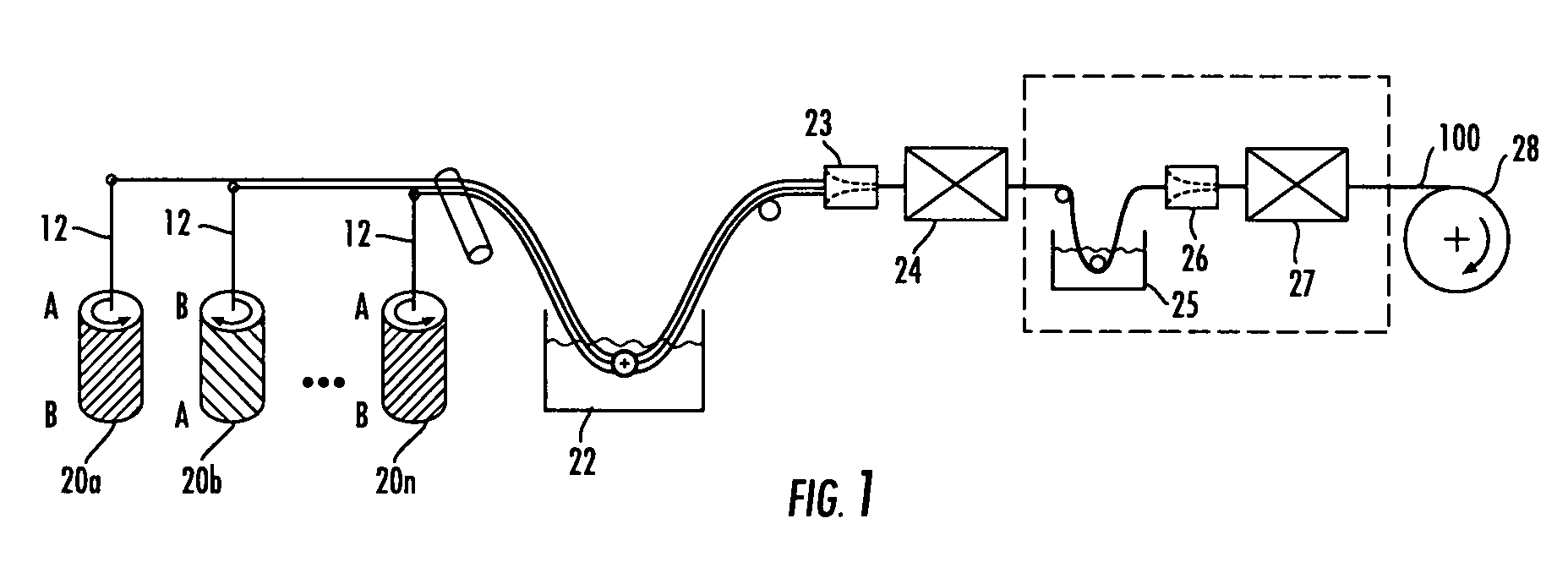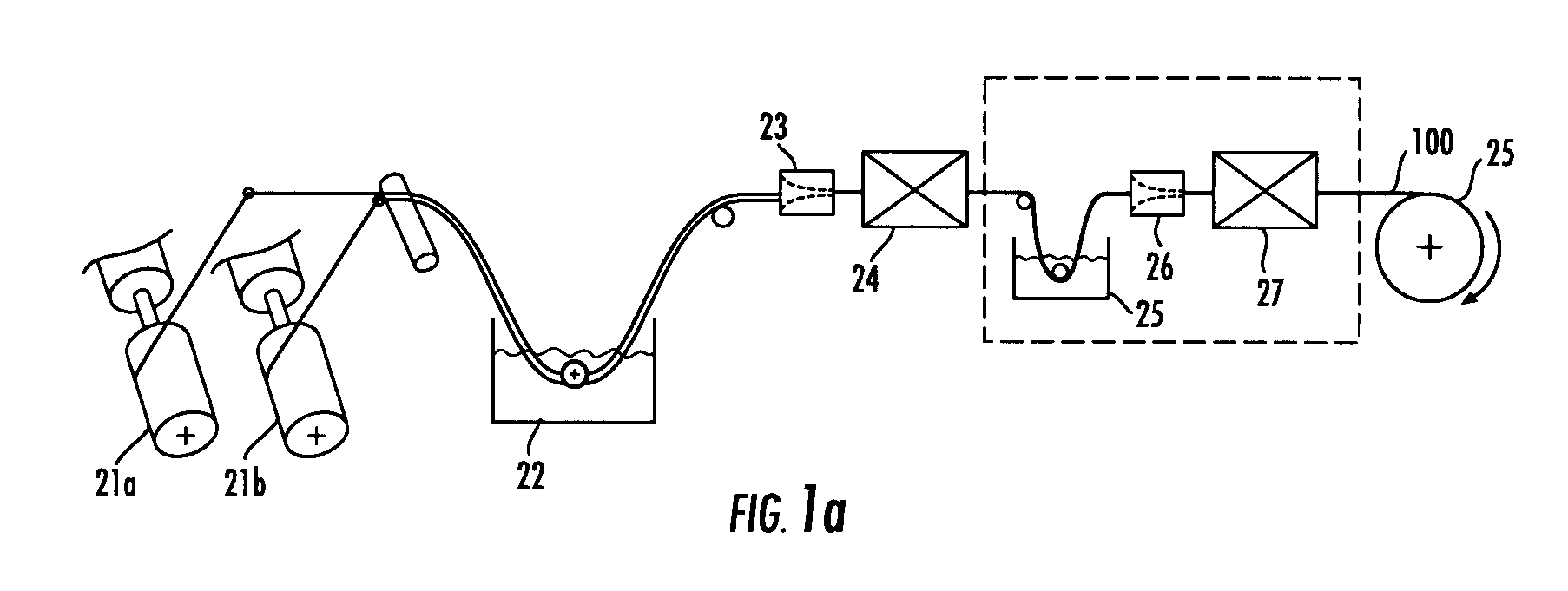Tubeless fiber optic cables having strength members and methods therefor
a technology of fiber optic cables and strength members, which is applied in the direction of optics, fibre mechanical structures, instruments, etc., can solve the problems of limiting the high-bandwidth capacity of optical fiber links to the subscriber, copper cables have drawbacks, and transmit relatively limited data, so as to inhibit distortion and/or influence the cross-sectional shape of tubeless cables
- Summary
- Abstract
- Description
- Claims
- Application Information
AI Technical Summary
Benefits of technology
Problems solved by technology
Method used
Image
Examples
Embodiment Construction
[0026]Reference will now be made in detail to the present preferred embodiments of the invention, examples of which are illustrated in the accompanying drawings. Whenever practical, the same reference numerals will be used throughout the drawings to refer to the same or like parts. Tubeless fiber optic cables of the present invention are different that fiber optic cables having tubes such as mono-tube or loose-tube constructions because tubeless fiber optic cables eliminate the mono-tube or loose tubes, thereby making them less stable during manufacturing and susceptible to distortion or deformation. This is especially true for generally flat cable design with relatively large cavities compared to the overall cable cross-section. In other words, the tube or tube assembly helps stabilize and support the cross-sectional shape of the jacket during manufacturing and removing the same removes the stability and support for the cable jacket, thereby making manufacturing more difficult. Mor...
PUM
 Login to View More
Login to View More Abstract
Description
Claims
Application Information
 Login to View More
Login to View More - R&D
- Intellectual Property
- Life Sciences
- Materials
- Tech Scout
- Unparalleled Data Quality
- Higher Quality Content
- 60% Fewer Hallucinations
Browse by: Latest US Patents, China's latest patents, Technical Efficacy Thesaurus, Application Domain, Technology Topic, Popular Technical Reports.
© 2025 PatSnap. All rights reserved.Legal|Privacy policy|Modern Slavery Act Transparency Statement|Sitemap|About US| Contact US: help@patsnap.com



